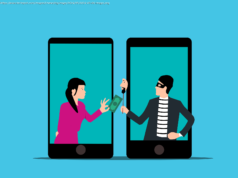With both now on sale, we explain what are the key differences between iPhone 8 and iPhone 8 Plus to help you decide which is for you.
By
Marie Black | 24 mins ago
Price comparison from, and manufacturers
On 12 September Apple announced an update to its iPhone 7 line in the form of the iPhone 8 and iPhone 8 Plus, and both phones are now officially on sale. We explain the differences between the two so you can decide which is best for you.
We’ll explain this in more detail below, but the key differences between iPhone 8 and iPhone 8 Plus can be summarised as follows:
• Price
• Screen size and resolution
• Cameras
• Overall dimensions and weight
• Battery capacity
Both iPhone 8 models are available to buy from Apple and major mobile operators today (22 September).
The iPhone 8 is the cheaper option, starting at £699, while the iPhone 8 Plus starts at £799.
That’s for the 64GB model; you can also buy either phone with 256GB storage at £849 and £949 respectively.
So whichever way you look at it the iPhone 8 Plus costs £100 more than the iPhone 8. Now let’s see what you get for that additional expense.
The iPhone 8 Plus is bigger than the iPhone 8 which allows for a larger display. The iPhone 8 has a 4.7in screen (measured across the diagonal), while the Plus is 5.5in.
That’s not the only difference in the screen department though, because the iPhone 8 Plus also packs in more pixels. Both are termed ‘Retina HD’ displays by Apple, but the Plus’ 1920×1080-pixel resolution has a density of 401ppi, while the iPhone 8’s 1334×750-pixel resolution has a density of 326ppi.
In truth it’s unlikely you’ll be able to see a clear difference between the clarity of these displays, but there is a difference.
The camera is one of the key reasons you’ll buy the iPhone 8 Plus over the iPhone 8. Whereas the iPhone 8 is fitted with a single 12Mp camera with f/1.8 aperture and OIS, the Plus additionally has a 12Mp telephoto lens with f/2.8 aperture and OIS that supports 10x optical zoom.
This extra lens will enable you to mess around with the focus on your photos, perhaps blurring the background in a portrait – an effect known as ‘bokeh’ that is becoming increasingly popular with consumers.
Only the iPhone 8 Plus has the new Portrait Lighting feature, an in-beta shooting mode that lets you create dramatic lighting effects.
Given the larger screen size the fact the iPhone 8 Plus is larger and heavier than the iPhone 8 will come as no surprise.
Though it’s only a fraction thicker, the iPhone 8 Plus is a good centimetre wider and two centimetres taller. It also weighs an additional 54g.
Apple has not confirmed the battery capacities for its iPhone 8 and iPhone 8 Plus, but it has said battery life will be about the same as for the iPhone 7 and 7 Plus. This leads us to believe they probably use the same batteries, which are 1960mAh and 2900mAh respectively.
The Plus therefore runs significantly longer than the iPhone 8: an extra 8 hours talk time, 20 hours audio playback or an extra hour internet use or video playback.
Despite their differences in capacity, both batteries can reach 50 percent charge in 30 minutes, and they support Qi wireless charging.
Read next: Our first impressions of the iPhone X
Follow Marie Black on Twitter
This one really does come down to a personal decision over whether you want a small or large phone. If you can stretch to the extra £100 the iPhone 8 Plus is technically the better of the two, with a larger, higher-resolution screen, dual-cameras and longer battery life. But if you’d rather a more compact device then the iPhone 8 also offers better value.
Price comparison from, and manufacturers
Galaxy Note 8 vs iPhone X
Awful clip art from 1994 is being tweeted every hour by a bot
How to update iOS on iPhone or iPad
Les meilleures applications pour enfants 2017






